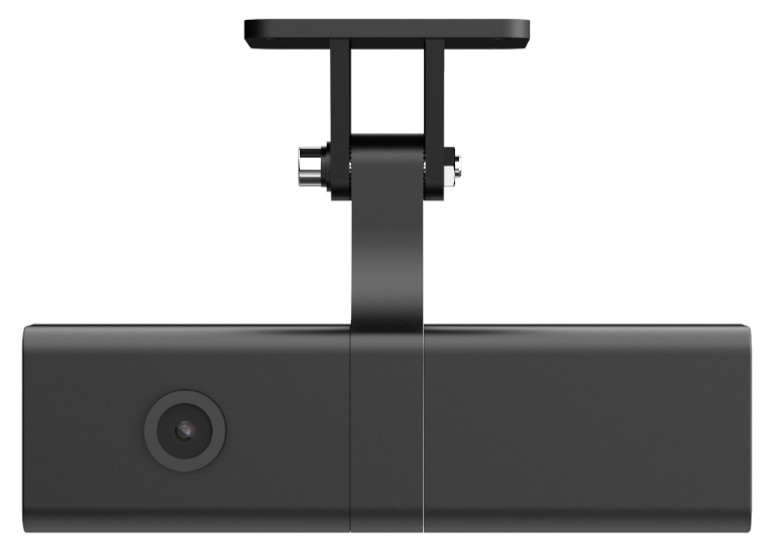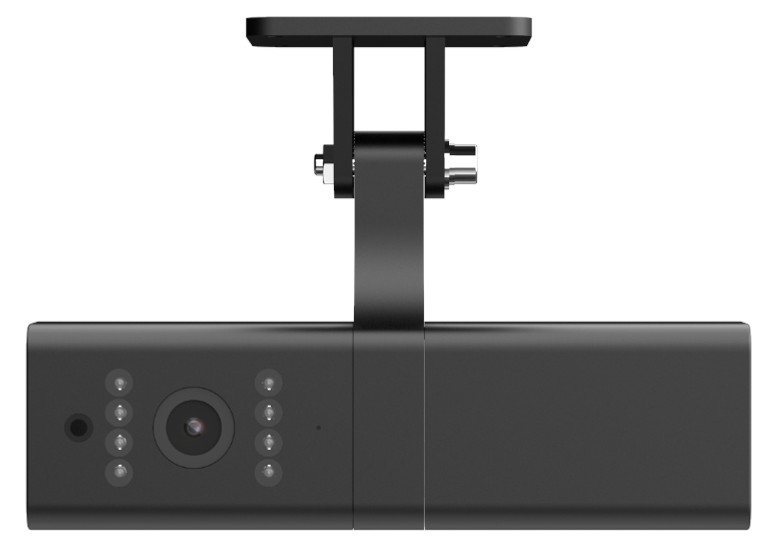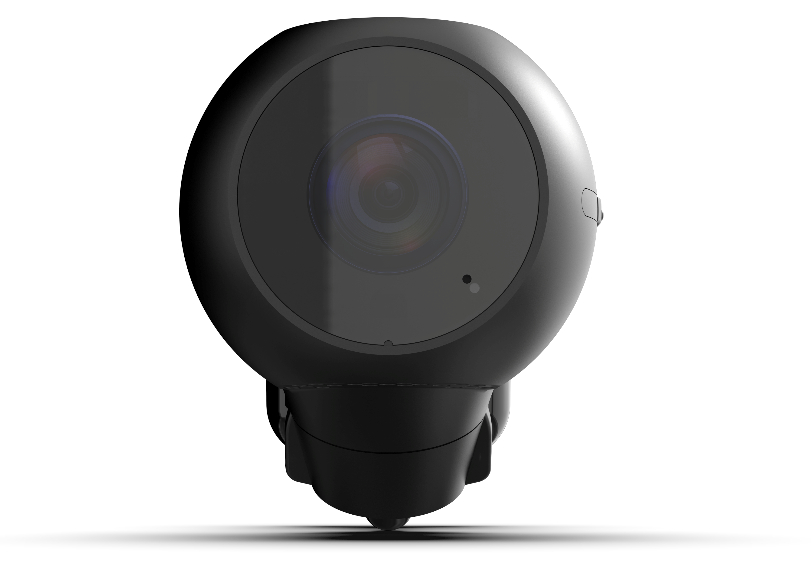Video telematics functionality has been part of the flespi ecosystem for quite a while, as ADAS and DSM became almost synonymous with video recording. Familiar, almost default features. These technologies serve as the foundation for building entire video platforms, but are still commonly seen as just basic footage of what’s happening on the road. By 2030, it's expected that 90% of commercial vehicles will be equipped with DSM and/or ADAS, so is it just about filming the car in the front?
Terms and definitions
In order to help you master video telematics lingo, let's clarify what the key types of "smart" cameras are and what functions are normally hidden behind the abbreviations used in the industry. At the same time, each hardware manufacturer might have a different approach to product development.
Dashcam was basically the starting point for video-on-the-move solutions – it recorded what was happening right in front of or behind your vehicle. Being the most trivial device, it's fairly handy even nowadays, as it's simple and can either capture images periodically or record an event.
DualCam (or dual cameras) became a logical development of video telematics when the need arose to record not only the road but also the driver for incident analysis and disciplinary control. Recording video outside and inside the cabin helps to monitor driver behavior and become an evidence base in case of accidents and disputed situations.
DSM (Driver Monitoring System) appeared as a way to detect driver fatigue and attention, especially in freight transport and buses, where the human factor is the main source of accidents. It uses cameras and sensors to warn about fatigue (yawning, eye closure), distraction recognition (either by phone, food, or smoking), seatbelts not fastened, etc.
ADAS (Advanced Driver Assistance Systems) is a comprehensive set of electronic systems serving as an extra pair of eyes on the road. Few people remember now that ADAS originated as an extension of automotive active safety systems (ABS, ESP), but with a focus on accident prevention. Initially used in premium passenger cars, it later transitioned to commercial transport. Now, it's much more sophisticated safety technology. Talking about lane keeping, collision warnings, and adaptive cruise control – it reacts, warns, and even steps in when needed.
Technologies in use
Different companies build their products on top of these technologies, so the market offers plenty of DualCams, DSM, and ADAS options, depending on your business goals and priorities. Recently flespi team supported a full video portfolio by one of our hardware partners, Teltonika. Its mode names resonate nicely with the tech definitions, so we're revising their devices today.
Our engineer, Evgeny Shatilo, who handled the video functionality, noted that the DashCam part went smoothly, while things got trickier with the ADAS and DSM models. That sounded fair, but we wanted a deeper dive – so I turned to the only truly objective team member: codi, our AI Assistant. With deep knowledge of device specs, manuals, and real user requests, he keeps a close eye on our development process and always delivers the facts.
So, let's go from A to Z.
Teltonika DashCam
As video surveillance technologies are inextricably linked with a professional tracker working in tandem, you'll also need FMC125 or, perhaps, FMC650 – the most advanced device in the company's portfolio. This approach removes the need to merge two types of data from different units (tracker and camera) in telematics software; it already comes from one unit – the telematics device.
This device is kind of a basic one. Being mounted on the vehicle's front window, a single front camera records video before and after events, takes periodic photos or images on request, and sends all data to the server. Dashcam, which is essentially a 1-lens version of DualCam, can be a perfect solution for the European region to ensure GDPR compliance, as it's not pointed at a driver.
Codi: "DashCam support required deep protocol analysis (Codec 8 Extended), handling RS232 camera interfaces, and adapting to minor firmware quirks and command parameter mismatches. 2G devices are only suitable for photos or very short video clips due to bandwidth constraints, while 4G models deliver much better performance."
Teltonika DualCam
DualCam with two lenses facing both the driver and the road is set to take pictures or record video fragments periodically or based on triggers. It works as an advanced video recorder, allowing for the reconstruction of potential accidents, documentation of the behavior of the driver, passengers, and other motorists, and avoidance of insurance claims.
It's often used in international logistics, car sharing, and taxi services. Not all good use cases are success stories here, but a recorded road accident helps bring justice. The responsible personnel can quickly review the evidence and respond accordingly. On the other hand, DualCam will also come in useful if you hire drivers without much experience or qualifications, or expect some kind of... fraudulent behavior.
Codi: "The integration of Teltonika DualCam with flespi is robust but demands careful attention to hardware setup and firmware compatibility. Key challenges included rare command schema mismatches and the need for precise SD card formatting and RS232 wiring. But the synergy with Teltonika’s engineering team and user feedback has led to ongoing improvements in usability and documentation."
Teltonika DSM
When we get behind the wheel, we usually correctly assess our physical condition, but when it comes to long-haul transportation and delivery delays, fatigue can often lead to tragedy. The driver-facing camera is not only used to identify the driver but also to alert about drowsiness and distraction. Its key purpose is to assist the driver during long trips, prevent reckless behavior, and therefore accidents.
Driver safety rules, like seatbelt use, can vary from country to country and can lead to fines, which is usually one of the biggest motivators. For example, if we head to Saudi Arabia, meeting strict safety rules is crucial. Companies running large fleets often require DSM devices to be installed before trucks leave the factory, meaning that vehicles are fully equipped and operational from the start. You can follow the rules, implement Hours of Service compliance monitoring, thus, with the control method digitized, it keeps things safe and takes the risks out of the equation.
Codi: "DSM is mature and well-supported in flespi, with features including photo capture, video recording, and event-based media uploads. Integration requires enabling Codec 8 Extended, configuring RS232 for DSM mode, and ensuring up-to-date firmware. Most user issues related to initial configuration and were resolved with detailed support guidance and troubleshooting checklists. User feedback is positive, with no significant unresolved issues reported."
Teltonika ADAS
Safety, especially for accidents involving pedestrians, has already become the basis for car design, for example, by Volvo. Or the huge number of sensors in Tesla analyzing potential risks while driving, both from the driver and other cars. But in other cases, you can get almost "all-in-one" with ADAS. All features are powered by equally advanced sensors and cameras that integrate seamlessly with Teltonika tracking devices, providing real-time data and alerts to drivers without requiring extensive vehicle modifications.
This specific device was designed for public transport and logistics. Though in commercial passenger transportation, this can boost client reputation because fewer accidents mean lower costs for repairs and insurance. There was a case a couple of months ago when an accident happened in Belgium, where a harsh braking event was detected by another ADAS camera paired with FMC650. Based on sensor data, the braking event was classified as "severe," leading to the remote request of a video clip. The truck driver's company was automatically notified by email, including the video footage as evidence.
Codi: "The main engineering challenges have been around firmware compatibility, camera serial number validation, and parameter standardization. The flespi team worked to ensure both legacy and standardized ADAS event parameters are available, making integration with third-party platforms more consistent. Users have successfully implemented ADAS event detection and media upload, with most issues resolved through support and engineering updates."
Data privacy issues
Dealing with video, you've got to have another thing on your mind. As tech kept creeping into our personal lives, terms like "personally identifiable data" and "data privacy" started to appear more and more often. Each lens, when directed at you, can silently capture your image, store it, and transfer video without your permission. Even if you gave your consent, do you know where and how your data is stored, and who’s responsible for it not ending up in the wrong hands?
DualCams record a driver, which is considered biometric data directly related to identity. This requires strict justification for collection, storage, and processing, as well as explicit driver consent. That's why DSM, which only analyzes behavioral patterns and more often uses local processing, quickly enters the game. It can operate without storing personally identifiable information (for example, instead of video, only an alarm signal or abstract parameters of the driver's state are recorded).
By the way, there's a regulatory "loophole" – DSM can be classified as a safety system rather than video surveillance, making it easier to implement from a legal perspective. But there are still problems! In Germany and France, even DSM is sometimes blocked if it stores images or does not have a clear legal basis. Therefore, DSM manufacturers are developing "lite versions" that only work in real-time without recording. And if a camera is built into the DSM (for example, with facial recognition)? Then it also falls under GDPR restrictions, and companies are obliged to obtain driver consent.
DualCams in commercial transport face bans, but there is a growing interest in "hybrid" solutions (for example, recording video only upon an event, without constant monitoring). On the other hand, on-device AI processing is the main trend that helps bypass GDPR by keeping data only inside the cabin.
Future vision
Modern systems have become significantly smarter due to artificial intelligence. AI algorithms reduce the number of false alarms, and object and behavior recognition have become more accurate. Additionally, adaptive systems have emerged that take driving style into account. I'd suggest whoever conquers AI will clear its way on the market.
DSM is the most in-demand, especially in Europe, due to new laws. Perhaps it can be assumed that GDPR is still slowing down the adoption of video telematics, but the growth trend is obvious – automakers are already implementing these systems "out of the box." If we simplify... DSM 2.0 might be able not only to record fatigue but also to predict driver behavior and adapt signals to individual habits. ADAS, DSM, and DualCam are developing in parallel, and there is always room to move forward, so let's keep our eyes on the road!



